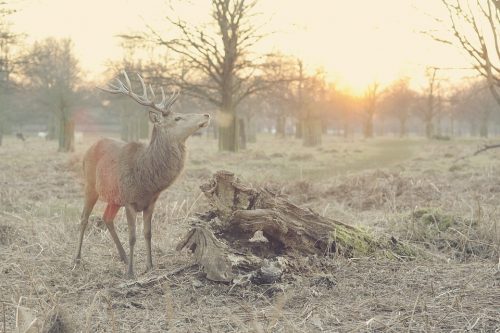Trail cameras are magnificent devices that provide an insight into the daytime and nighttime movements of foxes, red squirrels, otter, deer, and all other elusive species.
Basically, they are mobile digital cameras that have a built-in motion detection system to detect an animal or human intruder within the scope of the device. The camera, once triggered, will either take still images or a video footage.
Primarily designed for the use of hunters when they are scouting deer patterns within a hunting zone, the cameras are now used predominantly for wildlife observation.
Incandescent and Infrared Wildlife Cameras
There are trail cameras that are equipped with a flash, which means it works similarly to that of home compact cameras or point-and-shoot cams. The flash is rather powerful, so it should NEVER be used when taking a footage of nocturnal wildlife as the flash can disorientate and scare the animals. It will definitely increase the risk of the animals hurting themselves. Also, the flash would attract unwanted attention. If there are humans around, you won’t be able to retrieve your device in the morning.
Infrared cameras or trenbolone acetate steroider muscle stealth cams, as they’re often referred to as, feature a smart stealth IR system. This system makes use of high power infrared LED emitters that illuminate a subject that is at a distance from the camera.
Infrared cameras, when set up in the wild, are near invisible to animals and humans. They will either take images or record videos in complete darkness. The subject won’t be alerted to the fact that there is a camera that is rolling near it.
How to Maximize the Use of a Trail Camera
To ensure you maximize your trail camera‘s use, here are expert tips that you should remember:
- Use caution as you are placing your trail camera in an area where there’s tall foliage as that may ruin the output/results of the camera cenforce 100 mg venta espana. Unfortunately, the morning sun will warm up leaves and cause movement.
- Always make sure that your trail camera faces north or south (if it is possible). If your device faces towards the west or east, you may get washed out pictures from too much sun exposure. This often occurs in the morning if the lens is facing the east. If its placement faces the west, you will get washed out results in the afternoon.
- Clean the area that is in front of your trail camera. Leave a clearance of about 20-30 feet, including the sides. This is to ensure there is no foliage that will activate the camera when the wind blows.
- Test the sensing ability of the trail camera that you will be placing in the wild. Too close or too far from the targeted area won’t produce the best pictures. Worse, you will end up with missed pictures. Also, extreme temperatures will produce variances in motion sensitivity or detection. It is, therefore, crucial that you test your trail camera based on the current and predicted conditions of the weather.
- If you plan on capturing an image of a big buck using an incandescent trail camera, place your camera at an elevated area. A flash that is directed to an animal’s eye will cause it to abandon the area where you have placed your device. However, if the flash is coming from above which is a bit higher than the animal’s eye level, then it won’t bother it at all. If you have an infrared trail cam, you won’t have to worry about this aspect.

- An excellent way to aim a camera along a road or trail is to position it slightly to your right or left. This way, you will get fuller images and reduce the likelihood of producing partial images. Your camera’s sensor will get the best images instead of triggering early or late.
- Trail cameras come with SD card slots. If your camera’s internal memory won’t be able to store hundreds of photos, then we suggest you purchase an SD card or else you’ll regret not having enough space and missing an opportunity to study wildlife.
Wrap-Up
Now that you know everything there is to know about trail cameras, it is high time for you to get one! Browse through the site as we’ve listed some of the best trail cameras available in the market today.

Leave a Reply